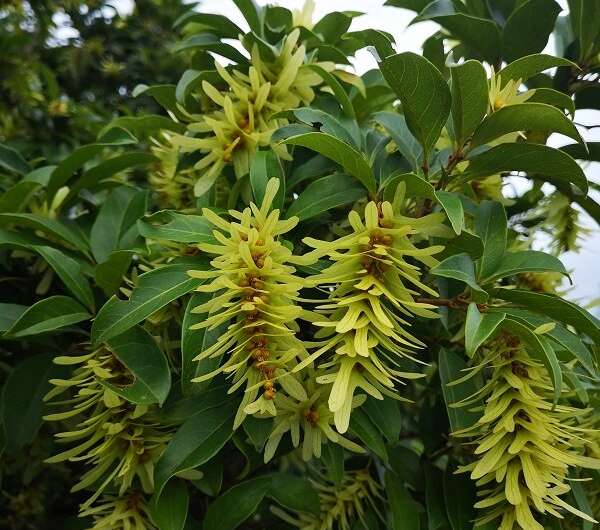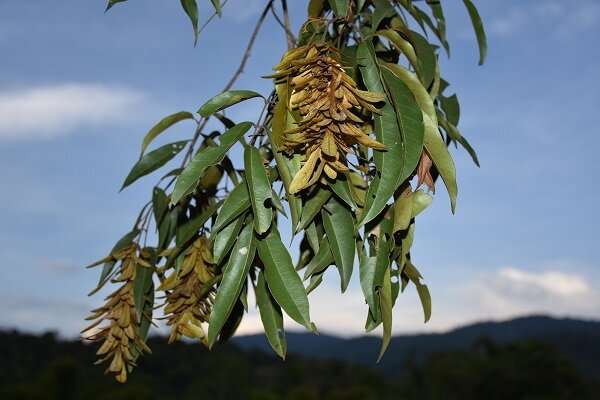Engelhardia plants exemplify transformation of vegetation across tropical Indochina peninsula to subtropical China

The complexity of global biodiversity in the tropical Indochina Peninsula and subtropical China bioregions has fascinated biologists for decades, but little is known about the spatiotemporal patterns in these regions.
In a study published in Molecular Phylogenetics and Evolution, researchers from the Xishuangbanna Tropical Botanical Garden (XTBG) of the Chinese Academy of Sciences reconstructed the temporal history of Engelhardia, deciduous or evergreen trees in the walnut family.
They aimed to investigate whether the transformation of subtropical evergreen broadleaved forests (EBLFs) in East Asia occurred from tropical elements, and the subtropical EBLFs were associated with the proposed dynamics of the East Asian summer monsoon since the Eocene.
The researchers investigated the phylogeography of two Engelhardia species (E. roxburghiana and E. fenzelii) that are sampled from the tropical Indochina Peninsula and subtropical China. They analyzed chloroplast DNA, nuclear ribosomal DNA, and nuclear simple sequence repeat data, along with data from ancestral range reconstructions, and related geological events.
They found that E. roxburghiana and E. fenzelii exemplified the transformation of vegetation across the tropical Indochina Peninsula to subtropical China on a large scale. Tropical elements could have been broadly distributed on the Indochina Peninsula during the Eocene, whereas the subtropical elements of the EBLFs originated from the tropical elements, and their appearance coincided with Miocene cooling and development of the East Asian summer monsoon.
"Our study provides biological evidence that the East Asian summer monsoon started at the Oligocene-Miocene boundary and intensified during the late Miocene-Pliocene. Subtropical China is vital to conservation planning," said Li Jie of XTBG.

More information: Hong-Hu Meng et al, Opening a door to the spatiotemporal history of plants from the tropical Indochina Peninsula to subtropical China, Molecular Phylogenetics and Evolution (2022). DOI: 10.1016/j.ympev.2022.107458
Journal information: Molecular Phylogenetics and Evolution
Provided by Chinese Academy of Sciences




















